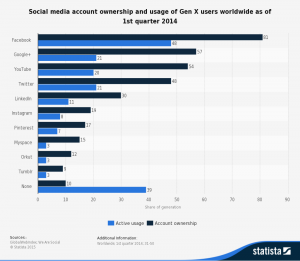
“Unless you are breaking stuff, you aren’t moving fast enough”
— Mark Zuckerberg
Zuckerberg’s line is the most well-known example of a common piece of advice on how to get ahead at work or how to get ahead in life more generally: “move fast.”
There is a tradeoff: move fast and break things or move slow and don’t break things. There is no move fast and don’t break things.
If the answer is as simple as moving faster, why don’t most people subscribe to Facebook’s motto of “move fast and break things?”
Perhaps, it’s because moving fast has only recently become a good strategy. It used to be terrible advice for how to get ahead in life or at work.
The ETTO Principle
The Efficiency-Thoroughness Trade-Off (AKA ETTO) states that people (and organisations) choose between being effective and being thorough, since it’s impossible to be both at the same time.
Let’s say you are editing articles. If you have 10 hours to edit and it takes you two hours to edit an article, you can make a decision between editing one article five times and being extremely thorough or editing five articles one time and being more efficient.
Resources are always scarce and so you’re always making a decision between more efficient, doing more tasks, and being more thorough, doing less tasks more thoroughly.
If you are launching products, you can either be super thorough and make to cross all the t’s and dot all the i’s for one product or you could launch four products in the same time period.

A Brief History of the 20th Century and ETTO
In the industrial economy that dominated the 20th century, it was generally better to err on the thoroughness end of the ETTO Spectrum. It was better to move slow and not break things because the cost of breaking things was high.
If you built the factory in the wrong place, it was there for a decade. If you rolled the product out to Walmart and Target too soon, you had to issue a massive, expensive recall.
In a world that is eaten by software, it’s more important to move quickly. You can always move the button around. It’s just a few lines of code.
The same product that might have required a million dollar roll out to Target and Walmart twenty years ago, can now be rolled out for $ 10,000 on Amazon. The cost of being wrong is much lower.
But exactly how fast should you move? What’s the appropriate spot for your company or project on the ETTO spectrum?
Enter the 70% rule.
The 70% rule is this: Once you’re at 70%, just do it.
The book is 70% done? Launch it.
The project is 70% finished? Ship it
You’re 70% sure about the decision? Make it.
Why 70%?
A Brief Foray into Standard Deviations
“If everything seems under control, you’re just not going fast enough”
– Mario Andretti
You can think about it in terms of standard deviations. In a normal distribution (AKA a bell curve), about 70% of the data will fall within one standard deviation, 95% will fall within two standard deviations and 99% will fall within three standard deviations.
Here’s an example for height (the symbol for standard is a lowercase sigma – σ)

The average height is 5’7” and about 70% of people are within one standard deviation — between 5’2” and 5’11”.
The reasons standard deviations matter is that when it comes to your work, it takes an equal amount of resources for each additional standard deviation.
If you’re editing an article, you’ll usually catch 70% of errors on the first sweep, 95% of errors on the second sweep, and 99% of errors on the third sweep.
In computer programming, there is a rule of thumb called the the ninety-ninety rule which explains the effect of standard deviations on software projects: “The first 90 percent of the code accounts for the first 90 percent of the development time. The remaining 10 percent of the code accounts for the other 90 percent of the development time.”
This is true of any project I’ve encountered.
When you’ve got 90% of a book written, you’re probably about halfway.
When you’ve got 90% of a product design nailed down, you’re about halfway to a final design.
Intuitively, this makes no sense, but given what we just looked at with standard deviations, it does.
90% is about 1.5 standard deviations. If we define finished as 99% (nothing ever gets to 100%) then that’s 3 standard deviations.
If it takes you 10 hours to get to 90% completed, it will take you 10 more hours to get to 99%.
As you get closer and closer to finished, it starts taking much longer to make progress.
The mistake most people and organizations make is that they think “Well, I want to do my best work so I want to get it to 99%.”
What this ignores is the opportunity cost. If it takes you 3 months to get 70% of the way finished, are you better off spending another 6 months getting to 99% or getting two other projects to 70%?
For entrepreneurs and startups, particularly early stage, the answer is almost always the latter, getting three projects to 70% is better than getting one to 99%.
Quantity has a quality all its own.
I launched the first version of my book with probably 100 typos in it. It could probably have been cut down another fifty pages. It was 70% as good as it could have been.
It took me nine months from writing the first word to having the book published and for sale. According to what we now know, it would have taken 18 months to get it to 95% or 27 months to get it to 99%.
Why not take the time to get it to 95% or 99%?
1. It was cheap to do it later – since editing the book just meant editing a document on my computer and re-uploading it to Amazon as opposed to printing of 10,000 copies to store in a warehouse, it was cheap to fix it.
Twenty years ago, the errors might have killed the book. If I’d published the book in 2000 and there were no e-books, it would make sense to spend more time on it. But, because most people downloaded the book on Kindle instead of buying it physically, I was able to correct the vast majority of them within a month and send out an update that everyone could download for free.
2. I didn’t know if it was going to work – I’m not James Patterson, J.K. Rowling or Jim Collins. If I knew a million people were going to buy my book on the first day, I would have spent 27 months on it. A million people aren’t going to buy my book (or yours), so you’re better off launching it at 70%.
Had I waited to get to 99% before releasing, it would have taken me over two years to publish it. It’s only worth getting something to 99% when you know it’s going to be really good. I didn’t know if the book was any good or not. If it’s good, you can always fix it later, I went back and corrected all major errors once I knew that the book was going to do reasonably well.
3. It made the final product better – You could be wrong about what 99% really looks like. Let’s say you’re writing a recipe book on 100 ways to make meatloaf.
You spend three months getting all the recipes picked out that you want to include. You think “I’m 70% of the way there, all I need to do is add lots of pictures.”
You can either :
- Spend another three months taking pictures and adding them in.
- Put out a basic version without pictures and get feedback.
If you do A), it might turn out that no one actually wants pictures, they would prefer a video. Now you just wasted three months taking pictures no one wants. If you do B, you can figure that out and record a video to include as a bonus to the book instead.
4. It made the marketing better – Is it better to release twelve features of your product every three months or one feature every week. Six of one, half-dozen of the other right? Nope.
One feature every week is better because it builds a narrative arc around your product.
You notice when they launch movies that there’s a whole narrative around it. Three years before it comes out they will announce that it’s being made, then six months later who got cast, then six months later, the first clips, then a year later the trailer, then three months before release the actors do a press tour.
You get the sense of it’s coming, it’s coming that makes you more likely to go see it because there is a narrative arc.

When does the 70% Rule Not Apply?
Toyota was famous for their six sigma (that’s the symbol for Standard Deviation) manufacturing — they produced perfect units with a 99.99966% probability.
Shouldn’t you do what Toyota did and get things to near perfect? Yes, but only when you’re as big as Toyota.
Toyota knew they were going to sell ten million cars in the next 12 months because they sold ten million cars in the previous twelve months.
I hadn’t sold a million copies of a book, I hadn’t sold a single copy of a book, so there was no reason to act like I would sell a million copies of this one.
This is more obviously true of software projects, but it’s also true for physical products, which might seem like the antithesis of software.
Twenty years ago, the minimum order to a Chinese factory might have been half a million dollars. Today it’s in the thousands of dollars because software has reached manufacturing as well. You’re better off getting a 70% good enough product on shelves in ⅓ of the time it would take you to get a 99% product. You can always make improvements and it’s likely that the final product will be better and you’ll get better marketing out of it
The 70% rule is based off an entrepreneurial principle called Affordable Loss. Simply put, can you afford to be wrong? If you are making a decision about where to put the factory, you can’t afford to be wrong.
If you run a nuclear reactor facility, you should take ten times as long and get to 99.9999999999999% before anything goes live. The costs of being wrong are catastrophic and impossible to reverse.
You’re better off getting it out the door at 70% and learning what people think than you are are trying to get to 95% if you’re making a decision that is either:
- Cheap to be wrong about OR
- Easily reversible
Real vs. Perceived Risk
The wrinkle here is that you have to figure out whether the potential loss is real or perceived.
One of the big lessons of evolutionary psychology is that our hardware is a few millennia behind our culture. We still have the neural circuitry that our ancestors did 10,000 years ago even though we live in a dramatically different world.
That means we fear social exclusion, and for good reason. If you lived in a tribe of a hundred fifty people and 99% of them either didn’t like you or didn’t care about you and 1% really liked you, you were going to get thrown out of the tribe, wander around and die.
However, that exact same ratio is the recipe for how to get ahead in life today. If you sort the potential market for any successful product into two categories, it would be something like.
99.9% of people – I don’t like and/or I don’t care about them.
.1% of people – I like them!
If the market is only 10 million people (it’s more than that, 10 million is .1% of the global population) and only .1% become customers and they’re each only willing to spend $ 100 per year (many have spent more), that’s $ 1 million per year. You can play with the numbers but even a $ 100 million business reaches a tiny percentage of people.
However, the thought that 99.9% of people won’t like or care about your work still feels us with terror. That’s perceived risk, not real risk.
If you ask me during any product launch whether it’s risky, my emotional reaction is always “yes.” However, that’s rarely the reality.
Real risk is that it’s going to cost you $ 1000 to launch the project and it’s your last $ 1000 and you have no other way to make money and if it doesn’t work you’re going to starve to death.
If you’re hesitating to go at the 70% mark, write down all the worst case scenarios that could happen and how you could get out of them.
Before my book came out I wrote “Everyone will think it sucks and that I am a charlatan.”
Solution: Refund everyone their money, go back to my consulting/freelance work. Problem solved.
There was no real risk, even though it felt emotionally terrifying. In fact, the riskier thing would have been to release it later. If I had spent three years working on it and it had flopped, that would have cost me a huge amount of time and money.

Speed: How to Get Ahead in Life
“If you are not embarrassed by the first version of your product, you’ve launched too late.”
-Reid Hoffman
Whether it’s time, money, or anything else, resources are always scarce. We are always making a decision about where on the ETTO spectrum we fall.
Most entrepreneurs fail because they focus on not breaking things instead of moving fast. Of course we do, we were raised in an industrial world. Our school systems was designed by industrialists and so it rewards us for thinking that way.
If you turn your math homework in at school and it’s 70% of the way there, you get a C. You should get some suggestions on how to make it a 95, and have the chance to take it back and work on it again. Or, maybe, your teacher should tell you that Math isn’t your subject and you should take more History classes.
You don’t have to be good at everything. You don’t even have to be good at most things. If it costs you $ 1000 to launch ten projects and nine fail and one makes a $ 100k, that’s good enough.
If the project you are working on is cheap to be wrong about or being wrong about is easily reversible, 70% is a good heuristic for finding the optimal point on the ETTO spectrum: moving fast and likely to work.
The foundations of the 70% principle is this: What feels risky is safe. What feels safe is risky.
At 70%, press go.
Did you like this essay about how to get ahead at work and how to get ahead in life?
In a world that is eaten by software, it’s important to move quickly. Knowing what feels risky is safe and what feels safe is risky is one thing, but did you ever think of how it can apply to your career?
Read the Free Chapter: ‘Welcome to Extremistan. Don’t Be a Turkey’, and find out why Entrepreneurship may actually be the safest career choice for the new economy.
Business & Finance Articles on Business 2 Community(70)
Report Post






